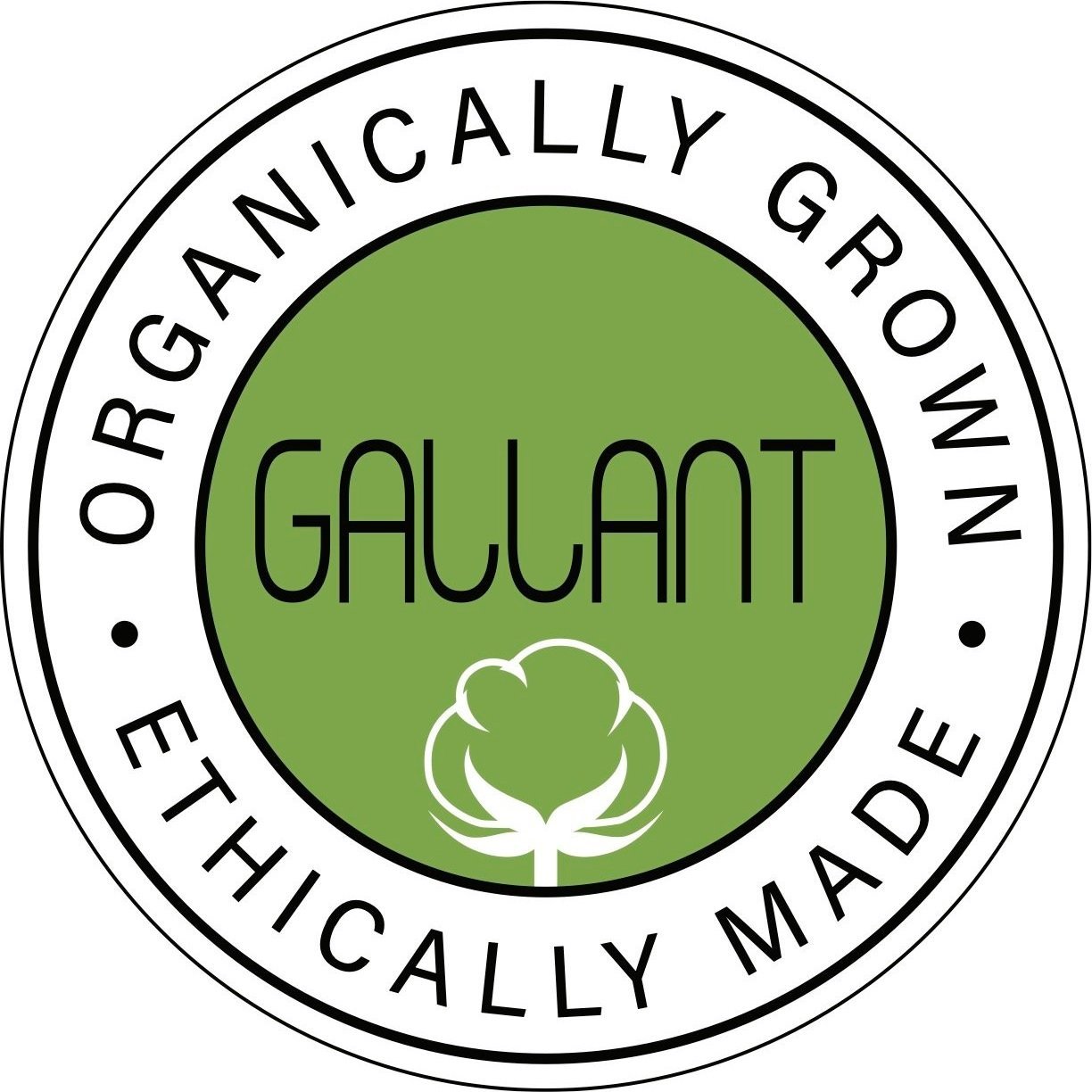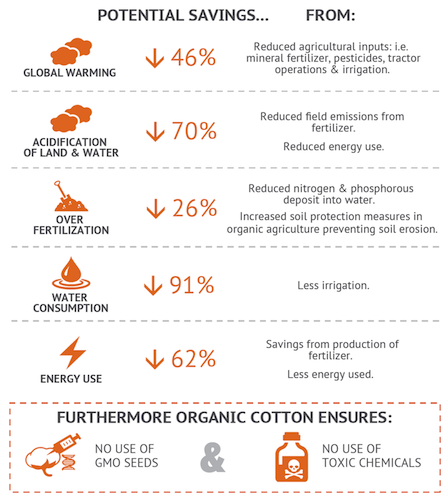THE MAJOR DIFFERENCE BETWEEN CONVENTIONAL & ORGANIC COTTON
Organic cotton is grown without the use GMO seeds and without toxic chemicals, it uses 91% less water, and it is good for the people and the planet.
Organic Cotton bud
Like our fruits and vegetables, cotton comes from farms around the world. Organic cotton farmers practice organic farming… avoiding Genetically Modified Organism (GMO) seeds, harmful chemicals, and using fewer resources. Organic Cotton is produced using natural processes that have a lower impact on the environment. According to the Textile Exchange, “Organic cotton is cotton that is produced and certified to organic agricultural standards.” Organic Cotton combines “traditional, innovation and science to benefit the shared environment…”, it also sustains soil’s health. Organic cotton uses almost 90% less water and 62% less energy than conventionally grown cotton reports the Textile Exchange. Switching to organic cotton production could reduce the global warming impact of cotton production overall by 46% compared to non-organic cotton says the Organic Trade Association (OTA).
Conventional Cotton
Traditionally grown cotton is sprayed with many chemicals that soak into the plant, the surrounding soil, and become ingested by the farmer. When pesticides are sprayed, toxic runoff often happens, where these toxic chemicals leak into our drinking water supply, rivers, lakes, and other sensitive ecosystems. Long term exposure to these chemicals can be detrimental to a farmer’s health and can negatively impact their lives. Research shows that conventionally grown cotton uses more insecticides than any other crop in the world. OTA reported cotton used $4.2 billion worth of pesticides in 2017 accounting for 6.35% by value of all the plant protection chemicals sold that year, including 12.34% of all insecticide sales and 3.94% of herbicide sales. These harmful chemicals can be deadly, as pesticides can poison farmers all over the world. Factory workers too, have to breathe in their fumes during the manufacturing process.
Processing Organic Cotton
When conventional cotton is processed to make apparel/textile, it is often treated with hazardous materials including silicone waxes, harsh petroleum scours, softeners, heavy metals, flame retardants, ammonia, formaldehyde, and polyvinyl chloride (PVC in screen printing).
This is why to safeguard the integrity of organic cotton and organic practices up to the finished products we rely on Global Organic Textile Standards (GOTS). GOTS certification is a stringent voluntary global standard for the entire post-harvest processing such as spinning, knitting, weaving, dyeing, manufacturing of apparel, and home textiles made with organic fiber. The standard prohibits the use of toxic chemicals during the processing stages and includes strong labor provisions as well as a prohibition of child labor. GOTS covers the processing, manufacturing, packaging, labeling, trading, and distribution of products sold as GOTS certified. When you purchase a GOTS Certified product, it means that the product has met strict environmental and social criteria during its entire supply chain.
What kind of products are made using organic cotton?
Organic cotton fiber is used on many products including personal items like sanitary pads and makeup removal pads. They are also used in apparel including wholesale organic cotton t-shirts. Other items include organic cotton wholesale makeup bags, bulk tote bags, bedsheets, towels, and more.


